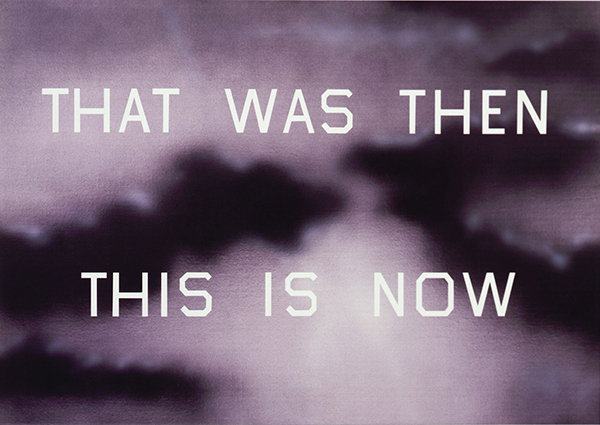Never a magazine to shy away from a challenge, Guernica has set about the thorny task of addressing the future of language in this, our first special issue of 2016. At a point in time when our polity seems perched on the edge of some great disaster, propelled by a new wave of verbal recklessness, the mere notion of looking into the future, as this year’s theme dictates we do, can be frightening business. In the interest of imagining a discursive world that we might actually want to inhabit, we must nonetheless forge ahead. What is perhaps most surprising about the essays and interviews assembled here is that our contributors appear much more interested in our shifting relationship to language than in the evolution of language as a mere set of signs.
A dominant thread throughout is the persistence of words as a site both of exclusion and of belonging. Language has been and continues to be a primary rubric by which we measure difference: the difference between races, between species, between subjectivities. It also exists as an intergenerational wellspring of memory and shared knowledge. The power to interpret language, and to prioritize certain kinds of communications over others, therefore, continues to be the subject of intense struggle. If, as Benedict Anderson suggests in Imagined Communities, print media emerged as a vehicle for “rapidly growing numbers of people to think about themselves, and to relate themselves to other, in profoundly new ways,” this special issue pushes us all to explore the contours of our own affinity groups.
After over fifty years of teaching and writing against the “English linguistic prison,” Kenyan author, playwright, and postcolonial theorist Ngũgĩ wa Thiong’o discusses the importance of creating a literary world that begins at home. He draws inspiration from independent builders and doers, as well as from his own experiences producing the first-ever modern play in the Gĩkũyũ language, to model what is possible.
Alena Graedon interweaves personal reflections on her longstanding fascination with telepathy and reportage on the cutting edge of mind-to-mind communication made possible through Brain Computer Interface technologies. In the age of search engines and wiki-everything, “does the promise of fused consciousness really diverge so radically from our current reality?… Can language happen solely in the mind, without any external signifiers?” Even if digital telepathy allows us to evolve past words, will we ever escape language?
Linguist John McWhorter grapples with the feelings of alienation caused by a lifetime of being a black man with a “white” voice. In a personal essay he gestures toward the complexities of American speech as a performance of race, class, and education, and traces the historical construction of what we have come to understand as the “black sound.”
In an interview, Guernica’s Rachel Allen draws out Dalhousie University biologist and self-proclaimed “whale nut” Hal Whitehead on what whale and dolphin click patterns can teach us about cetacean “culture.” Professor Whitehead’s research on distinct linguistic clans among sperm whales, in particular, points to new ways of thinking about the role of language in the social learning practices of animals. Rather than seeking to superimpose models of human cognition, he stresses the importance of designing “experiments that makes sense to [animals] on their terms.”
And speaking with Guernica’s Elizabeth Karp-Evans, architect and writer Jimenez Lai ponders the syntactic conventions of architectural design, and advocates breaking them in the interest of good storytelling. Through speculative projects like Township of Domestic Parts, Lai develops spaces with “character,” defined both in terms of form and personality, and places them in relations that allow them to speak. Ultimately, he reflects, in design “it’s important to write a mystery novel where the takeaway is not a giveaway—where something could be read over and over.”
Also featured are a conversation between young Native language activists about the challenges of preserving Alaska’s rich linguistic heritage, and an interview with dance-poetry pioneer Natica Angilly, in which she recounts a life working at the intersection of expressive modes. Plus, new fiction by Swati Khurana and Emma Komlos-Hrobsky, poetry from Shelly Taylor and Samuel Amadon, meditations on emoji, the future of American Sign Language, and more.
Features:
Ngũgĩ wa Thiong’o: Teach Me to Be Me
John McWhorter: Thick of Tongue
Elisa Gabbert: Can Ideas Withstand Shifts in Language?
Interviews:
Deep Sounds: Rachel Allen Interviews Hal Whitehead
Living in a Briefcase House: Elizabeth Karp-Evans interviews Jimenez Lai
Art:
The Footsteps of Dance Poetry: Jen Karetnick interviews Natica Angilly
Fiction:
Emma Komlos-Hrobsky: Snow Signs
Poetry:
